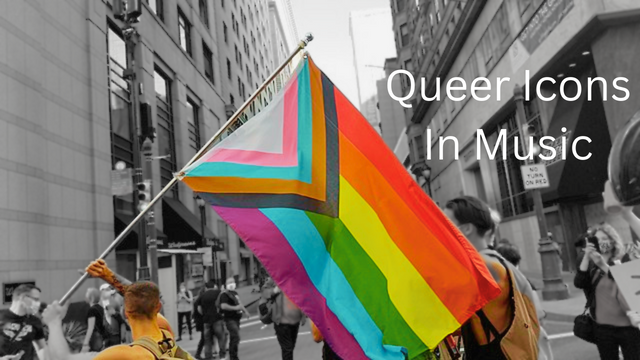I’ve been thinking a lot about what brings people to the status of being “queer icons”. Many of these people aren’t queer themselves, yet they are subject of adoration by many queer fans. And, there’s so many people who are queer themselves and quite popular who never seem to receive this distinction. My knowledge in this matter is primarily focused on musicians, so I’ll keep this discussion limited to that realm.
Allies and Icons
Kate Bush is a good example of someone who isn’t queer herself, but her music resonates with those fans. “Running Up That Hill” has been interpreted by many as a trans allegory, where God swaps the places of the narrator with her male lover. “Kashka from Baghdad” laments the situation of a gay man who “lives in sin” in a relationship with another man.
As far as icons who are queer themselves go, Lady Gaga has certainly made her mark. She not only has music directly supporting queer people, but has contributed much to queer activism. Both artists pushed the boundaries of what was acceptable to discuss in mainstream pop culture for their time. Keep in mind, “Born This Way” by Lady Gaga was released four years before even the Obergefell v. Hodges decision that legalized gay marriage.
A Would-Be Icon
So why does someone like Kurt Cobain, who similarly supported queer people during his time with Nirvana, not have the same level of recognition as a queer icon as others? Cobain’s one interview during the release and promotion of Nirvana’s Insecticide was with The Advocate magazine which promoted “Gay and Lesbian” issues. He called himself “gay in spirit” and “probably could be bisexual”. He performed with Nirvana at a benefit concert in Oregon to oppose an anti-gay ballot measure being proposed in the state.
If any of you in any way hate homosexuals, people of different color, or women, please do this one favor for us — leave us the f— alone! Don’t come to our shows and don’t buy our records
Liner notes for Nirvana’s “Incesticide”
Although Cobain was certainly popular enough to be known by queer fans, he’s largely left out of these kinds of conversations. I believe this may be due to the nature of Nirvana’s music. Most queer icons in music, at least in the 20th century, are women or they are men who write poppier songs and ballads. This trend is largely reflective of the perception of gay men and lesbians by themselves and wider society at the time. Gay men were stereotypically effeminate and lesbians were stereotypically butch (and any other queer people were ignored).
Even though Cobain often acted in line with these stereotypes, both in his private life and on-stage, his music was much more aggressive than the music of most other queer icons of the time. As such, there may have been a reluctance among the queer community in the 90s to adopt Cobain’s music as theirs because it broke from those stereotypes.
Concluding Thoughts
While popularity and queer subject matter may be important in making someone a queer icon, those don’t seem to be the only criteria, at least for older musicians. Actually this trend still exists to some extent today too. Rarely, if ever, are aggressive rock or hip-hop artists (many of whom are queer) seen as icons, even if they discuss the matter in their music.

